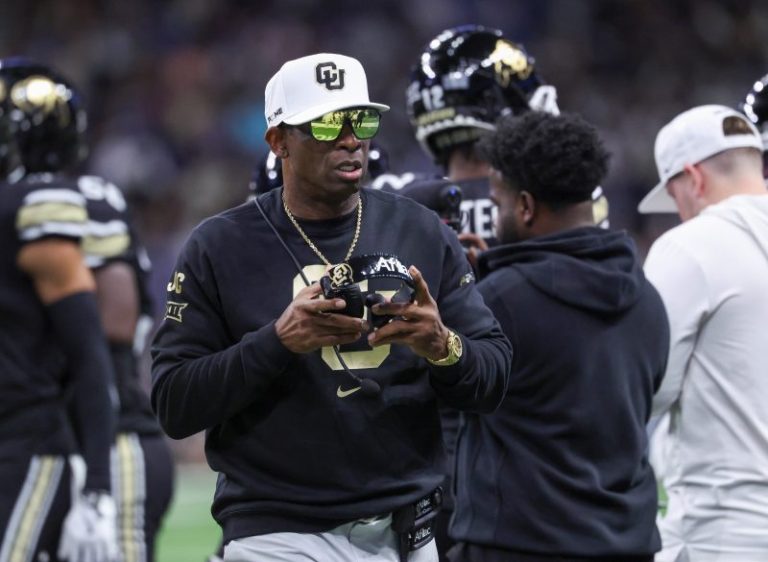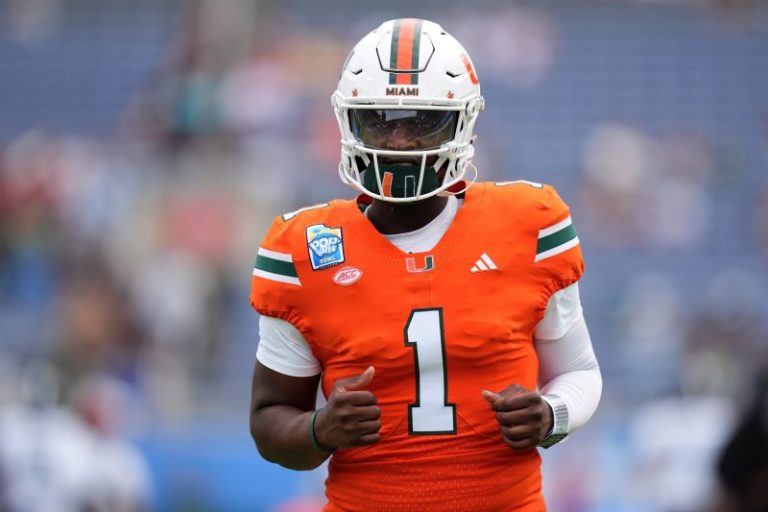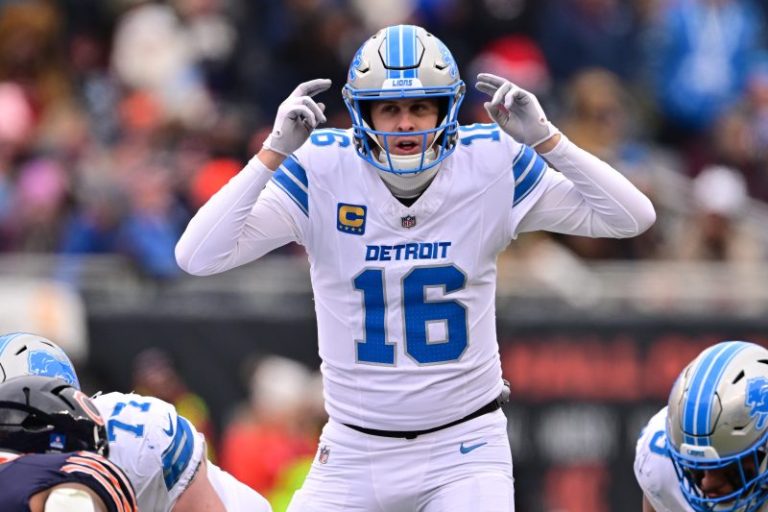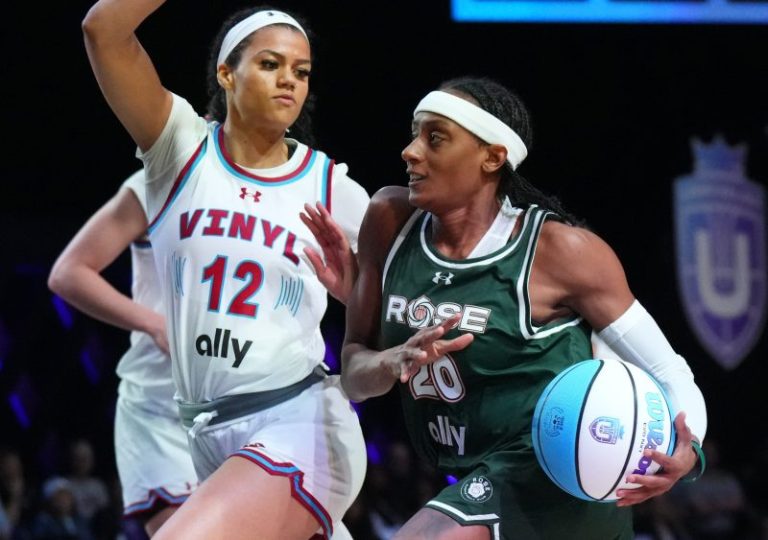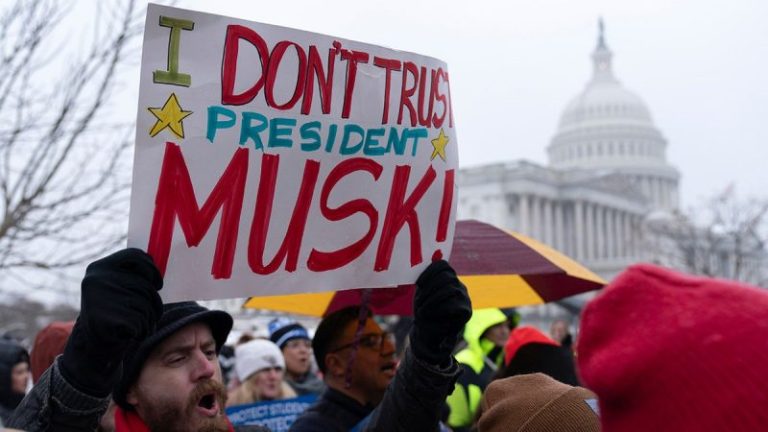The two-week window for NFL teams to apply the franchise tag to pending unrestricted free agents (UFAs) opened Tuesday.
Among stars with expiring contracts, the tag is often an unpopular mechanism as it hinders (or completely eliminates) the ability to negotiate with other clubs during free agency. And while the one-year tag pays well – generally speaking, its value is based on the average of the top five salaries at a player’s respective position – it doesn’t offer the security of a long-term contract and prevents players from approaching the top of their financial market … though for some, typically players not drafted in the first round, the tag is a welcome windfall after they’ve outperformed a rookie contract.
Yet tags can also be a precursor to a trade or simply a placeholder that allow a player and his camp more time to hammer out a long-term arrangement (see Lamar Jackson, circa 2023). However when those outcomes don’t materialize, they can lead to missed training camps, occasional early season absences or – like in the infamous case of former Steelers star Le’Veon Bell – skipping a whole campaign and an entirely altered career arc. Consequently, buyers tend to be leery – especially considering, as the Jackson case ostensibly proved, other teams are apparently completely unwilling to part with two first-round picks, the cost to lure away a franchised player.
As all 32 teams mull their tag options preceding the 4 p.m. ET deadline on March 4, here’s a bit of advice for each (notes: salary cap projections courtesy of Over The Cap; teams listed alphabetically):
Arizona Cardinals
Plenty of free agent money (nearly $70 million) in the bank for a team that seems very close to a postseason breakthrough … but no reason to use any in the tag space.
NFL STATS CENTRAL: The latest NFL scores, schedules, odds, stats and more.
Atlanta Falcons
Be nice to keep C Drew Dalman, 26, but he doesn’t warrant the offensive line tag – effectively a left tackle tag – especially for a team that has to do nearly $12 million worth of belt tightening.
Baltimore Ravens
The big question is what they’ll do with Pro Bowl LT Ronnie Stanley. He’s fantastic when on the field and a key component of what was the NFL’s top-ranked offense in 2024. But he’ll be 31 next month, just played a full season for the first time and could cost nearly $25 million if tagged – and Baltimore would have to clear cap space to franchise him. Seems like the best play is to let Stanley assess his market while leaving the door open for him to re-sign.
Buffalo Bills
Not only are the perennial AFC East champions nearly $17 million over the cap, none of their significant free agents – WR Amari Cooper, CB Rasul Douglas, S Damar Hamlin – are at an age or performance level worthy of a tag. This could be a second straight offseason where Buffalo struggles to make noticeable additions or retentions.
Carolina Panthers
It appears like they might be on the way up after bottoming out. But no need for GM Dan Morgan to get too far over his skis with a fairly tight cap (about $17 million to spend) and no marquee free agent on his roster, which wasn’t the case last year when OLB Brian Burns was tagged.
Chicago Bears
GM Ryan Poles can best use his $60+ million on outside UFAs – maybe the O-line specifically with two starting spots about to be vacated – rather than consider a tag for anyone positioned to depart.
Cincinnati Bengals
The fate of WR Tee Higgins, who was franchised last year, might be the most compelling question of any free agent – he’s ranked No. 1 by USA TODAY Sports – this offseason. A second tag would grant a 20% bump to nearly $26.2 million for Higgins, the only franchised player in 2024 who didn’t ultimately sign an extension. With more than $46 million in cap space, the Bengals can afford to do it. The question is whether they should given their significant defensive needs – and at a time when WR1 Ja’Marr Chase and DE Trey Hendrickson, among the top players at their respective positions league-wide, are both seeking top-of-market compensation. QB Joe Burrow hasn’t been shy about his desire to keep all of the above. However the roster might be best served with a tag-and-trade approach to Higgins, which would better enable Cincinnati to pay Chase and Hendrickson and perhaps pick up draft picks to flesh out the depth chart’s weak points.
Cleveland Browns
They’re overspent by more than $31 million, most in the NFL after New Orleans. Zero reason to make one of this organization’s many pressing challenges worse.
Dallas Cowboys
Kickers aside, no position can be tagged more cheaply than a running back. Therefore, case to be made here to franchise Rico Dowdle, who’s only 26, coming off a breakout season (1,328 yards from scrimmage) and relatively low professional usage prior to 2024. But considering Dallas has no wiggle room at present and will need to create some to extend LB Micah Parsons, that case for Dowdle falls apart pretty quickly.
Denver Broncos
After paying former QB Russell Wilson handsomely not to play for them in 2024, the Broncos are now out of cap purgatory with nearly $35 million available. But they have no reason to devote a sizable chunk of that to any of their UFAs.
Detroit Lions
They couldn’t convert the NFC’s No. 1 playoff seed into their first-ever Super Bowl berth, so they probably should spend a good portion of their $45 million free agency budget for depth – not a tag for CB Carlton Davis III or anyone else – after being ravaged by injuries late in the 2024 season.
Green Bay Packers
Similar situation to the NFC North rival Lions in that the Pack can be competitive in free agency – and have been much more so recently – but need not reserve any of their bankroll for a tag … especially given the opportunity to perhaps reel in a veteran wideout.
Houston Texans
Their only noteworthy free agent is WR Stefon Diggs … who is 31 and coming off reconstructive knee surgery. Moving on.
Indianapolis Colts
C Ryan Kelly has been a faithful, accomplished player here for nine seasons. He’ll also be 32 at the start of next season. Might make sense to retain Kelly but at a more prudent price point.
Jacksonville Jaguars
G Brandon Scherff, 33, has been a standout for most of his decade in the NFL. But, like the case with Kelly, tags are generally reserved for players with their best years ahead of them.
Kansas City Chiefs
They have several key players on expiring deals: LB Nick Bolton, G Trey Smith and S Justin Reid. What they don’t have is cap room … or, as their failed three-peat highlighted, a serviceable left tackle or sufficient pass rush depth.
Las Vegas Raiders
Their new regime has more than $92 million in available cap space … but no UFAs worthy of a tag. Hard to believe the Silver and Black won’t be more aggressive in pursuing a quarterback in the coming weeks, but stands to reason new coach Pete Carroll will otherwise be more focused on resetting the culture than trying to immediately spend this team out of its AFC West talent deficit.
Los Angeles Chargers
OLB Khalil Mack, who turns 34 on Saturday, remains a very effective player … if not one you tag to the tune of $25+ million. RB J.K. Dobbins just turned 26 and comes off his first NFL season with more than 1,000 yards from scrimmage … but his injury history makes him a dicey proposition – especially with his positional tag likely to jump past $13 million. The Bolts would be better served targeting players like Higgins and Smith while trying to re-up Mack at a more reasonable rate.
Los Angeles Rams
Could be some significant moving parts here, the futures of Super Bowl 56 heroes Matthew Stafford and Cooper Kupp currently in flux, Kupp revealing that the Rams are looking to deal him. Either way, with more than $37 million available, the Rams are in position to tag Alaric Jackson, a 26-year-old who’s held down the left tackle spot for the past two seasons. And if they stick with Stafford, paying the premium for Jackson makes further sense.
Miami Dolphins
They’ve already begun cutting costs, parting with players like CB Kendall Fuller and RB Raheem Mostert. That will need to continue for this bloated roster if the Fins want to tag talented S Jevon Holland – though easy to argue they’re better off letting him go in order to focus on a pair of lines with significant issues.
Minnesota Vikings
With $55 million in the player acquisition coffers, they could tag QB Sam Darnold – even at roughly $40 million – and that might be the optimal strategy given this year’s light supply of quarterbacks, whether in free agency or the draft, even if it precedes a trade that brings back more draft capital to help 2024 first-round QB J.J. McCarthy. But there’s also a case to just keep Darnold to see if he can replicate or improve upon his Pro Bowl breakout. Barring that, franchising CB Bryon Murphy Jr., 27, at half the cost of Darnold, is equally sensible, especially as a bridge to a long-term deal.
New England Patriots
A ton of needs and ton of cap room here – nearly $120 million at present, most in the NFL – but no need to resource any of those funds on any players about to shake loose here.
New Orleans Saints
As is the case most years, no cap credit card is more maxed out – the Saints $54 million overbudget in 2025, highest in the league. Though the cap gymnastics here will begin soon enough, no reason to make them more difficult by adding a tag to the mix.
New York Giants
Lot of issues here but worrying about where to allot a tag isn’t one of them.
New York Jets
Among their slew of free agents, 28-year-old CB D.J. Reed is the most appealing. But for a team in the midst of its latest reboot and with limited cap space (shy of $17 million) – not to mention with stars like WR Garrett Wilson and CB Sauce Gardner newly eligible for extensions – a tag doesn’t make sense.
Philadelphia Eagles
The recently crowned champs will likely be raided in free agency with LB Zack Baun, G/T Mekhi Becton, OLB/DE Josh Sweat and DT Milton Williams poised to hit the market. With only $18 million in cap space, using the tag probably isn’t judicious – especially since Baun isn’t a pass rusher and Becton isn’t a regular tackle (here anyway). But with fellow LB Nakobe Dean rehabbing from a major knee injury suffered last month, EVP/GM Howie Roseman might want to figure out some way to re-sign Baun, a Defensive Player of the Year finalist, while relying on his depth and the draft to backfill the other spots.
Pittsburgh Steelers
They more than $53 million available for free agency. Doesn’t mean they should overspend on potential departures such as QBs Justin Fields and Russell Wilson or RB Najee Harris. Fields, who turns 26 next month, seems like the wisest investment among that trio. But even if the Steelers somehow wind up in a bidding war for him, it certainly wouldn’t justify such a prohibitively expensive tag.
San Francisco 49ers
Copious fluidity here, from the presumption that QB Brock Purdy will get his long-awaited extension while WR Deebo Samuel currently sits on the trade block. The Niners have nearly $44 million in cap room, and a good portion could go to Purdy. But they could quite feasibly pay their quarterback and also tag S Talanoa Hufanga, 26, who’s two years removed from an All-Pro season and one from a major knee injury. However his age and position should make him a preferable option to CB Charvarius Ward, who’s almost 30.
Seattle Seahawks
Even if they had cap room and a free agent worthy of a tag, they’re better off (belatedly) importing more players – on both sides of the ball – who better fit the way coach Mike Macdonald wants to operate.
Tampa Bay Buccaneers
Great as it would be to keep Chris Godwin in the building, you can’t risk paying an aging wideout coming off a dislocated ankle anything close to $25 million for one season of labor.
Tennessee Titans
They have more than $44 million at their disposal but need to spend more wisely than they did in 2024. That means no tag and a careful assessment of the quarterback market, which can provide the Titans an upgrade – whether via free agency or the draft.
Washington Commanders
As far as the culture and talent have come here in the last year, HC Dan Quinn and GM Adam Peters will doubtless try to maintain (and augment) it tag-free – and have more than $75 million to assist with that aim – despite how reliable soon-to-be 35-year-old LB Bobby Wagner remains.
What is the NFL franchise tag?
It’s a one-year tender that provides a player with a significant raise from his current team but impedes his ability to test the free agent market. A tag’s value is based on a player’s position. Per the NFL CBA:
“The Nonexclusive Franchise Tender shall be a one year NFL Player Contract for (A) the average of the five largest Prior Year Salaries for players at the position . . . at which the Franchise Player participated in the most plays during the prior League Year, which average shall be calculated by: (1) summing the amounts of the Franchise Tags for players at that position for the five preceding League Years; (2) dividing the resulting amount by the sum of the Salary Caps for the five preceding League Years . . . ; and (3) multiplying the resulting percentage by the Salary Cap for the upcoming League Year . . . (the ‘Cap Percentage Average’) . . . ; or (B) 120% of his Prior Year Salary, whichever is greater.”
Tag values rarely decrease year over year.
Franchised players have until July 15 to reach a long-term deal with their team. Otherwise, they must play the 2025 season on the tag.
Non-exclusive franchise tag: They allow players to negotiate with other clubs. If the player signs an offer sheet with a different team, his current one has the option of matching it or letting him go and receiving two first-round draft picks as compensation – a scenario that hasn’t occurred since 1998. However players can be franchised and traded for alternative compensation if an arrangement is reached.
Exclusive franchise tag: A player receiving this version of the tag cannot negotiate with another team.
Transition tag: Slightly less lucrative than a franchise tag, it returns no draft compensation to a player’s original team if it declines to match an offer sheet.
How much are franchise tags worth?
The value for each tag in 2025 has not yet been finalized. The following are the tag values, by position, in 2024:
Quarterback: $38.3 million
Running back: $11.95 million
Wide receiver: $21.82 million
Tight end: $12.69 million
Offensive lineman: $20.99 million
Defensive end: $21.32 million
Defensive tackle: $22.1 million
Linebacker: $24.01 million
Cornerback: $19.8 million
Safety: $17.12 million
Kicker/punter: $5.98 million
Which players received the franchise tag in 2024?
Giants OLB Brian Burns: Franchised by the Panthers, he was later traded to New York and signed a five-year, $141 million contract.
Bengals WR Tee Higgins: Played last season on the $21.82 tag for wideouts.
Jaguars OLB Josh Hines-Allen: Eventually signed five-year, $141.3 million contract.
Bears CB Jaylon Johnson: Eventually signed four-year, $76 million extension.
Ravens DT Justin Madubuike: Eventually signed four-year, $98 million extension.
Colts WR Michael Pittman Jr.: Eventually signed three-year, $70 million extension.
Titans CB L’Jarius Sneed: Franchised by the Chiefs, he was later traded to the Titans and signed a four-year, $76.4 million contract.
Buccaneers FS Antoine Winfield: Eventually signed four-year, $84.1 million extension.
Patriots S Kyle Dugger (transition tag): Eventually signed four-year, $58 million extension.
All NFL news on and off the field. Sign up for USA TODAY’s 4th and Monday newsletter.


